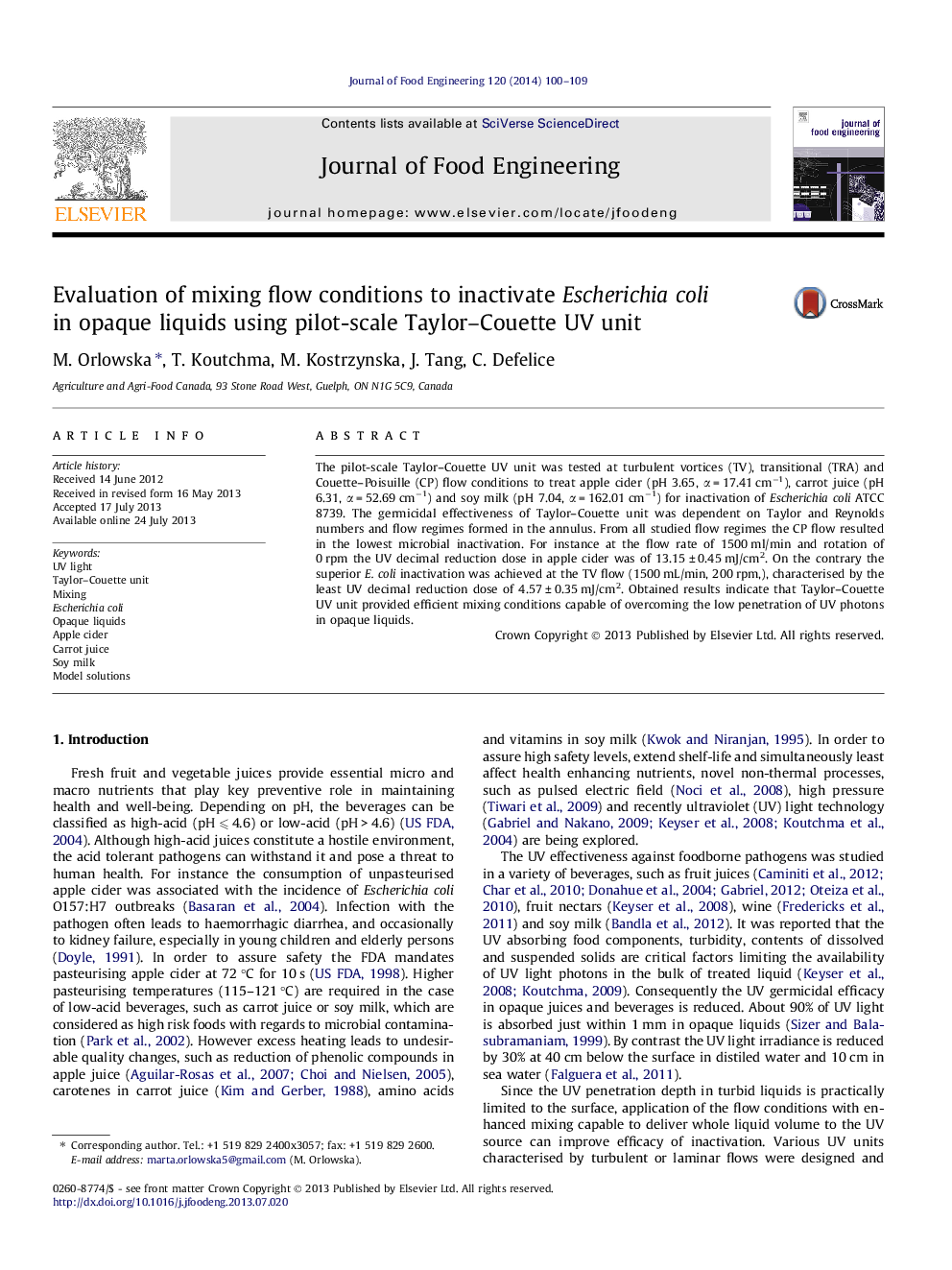| Article ID | Journal | Published Year | Pages | File Type |
|---|---|---|---|---|
| 223316 | Journal of Food Engineering | 2014 | 10 Pages |
•Novel Taylor–Couette UV unit was tested for the efficacy of E. coli inactivation.•Germicidal effectiveness was dependant on the flow regimes generated in the reactor.•Mixing conditions allowed to overcome low penetration of UV light in opaque liquids.•Inactivation kinetics was not dependant on the absorbing properties of beverages.
The pilot-scale Taylor–Couette UV unit was tested at turbulent vortices (TV), transitional (TRA) and Couette–Poisuille (CP) flow conditions to treat apple cider (pH 3.65, α = 17.41 cm−1), carrot juice (pH 6.31, α = 52.69 cm−1) and soy milk (pH 7.04, α = 162.01 cm−1) for inactivation of Escherichia coli ATCC 8739. The germicidal effectiveness of Taylor–Couette unit was dependent on Taylor and Reynolds numbers and flow regimes formed in the annulus. From all studied flow regimes the CP flow resulted in the lowest microbial inactivation. For instance at the flow rate of 1500 ml/min and rotation of 0 rpm the UV decimal reduction dose in apple cider was of 13.15 ± 0.45 mJ/cm2. On the contrary the superior E. coli inactivation was achieved at the TV flow (1500 mL/min, 200 rpm,), characterised by the least UV decimal reduction dose of 4.57 ± 0.35 mJ/cm2. Obtained results indicate that Taylor–Couette UV unit provided efficient mixing conditions capable of overcoming the low penetration of UV photons in opaque liquids.
